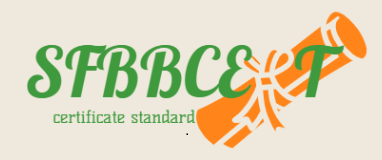
A Step-by-Step Guide to Crisis Prevention in Restaurants
Food poisoning is one of the most serious threats that can damage a restaurant’s reputation. What matters most is a team’s readiness and a swift, well-documented, and systematic response based on SFBB (Safer Food, Better Business) standards and the requirements of the sfbbcert framework.
1. Immediate Identification of Suspicious Symptoms
Early symptoms of foodborne illness usually appear shortly after consuming food:
Nausea and vomiting
Diarrhea
Abdominal pain or cramps
Fever or chills
Weakness or fatigue
If symptoms are reported by a customer or staff member, an immediate investigation must begin and the designated food safety officer should take the lead.
2. Accurate Logging and Documentation
According to SFBB food safety management principles, all related data must be carefully recorded:
Date and time of symptom onset
Type of food consumed
Details of the affected customer or staff (if available)
Names of staff involved in food preparation
Food service and storage temperatures (if available)
Hygiene and sanitation status at the time
3. Immediate Halt of Suspected Food Service
Stop serving the suspected food immediately
Store a sample of the food in refrigeration for analysis
Sanitize all equipment, surfaces, and utensils
Review or discard other similar food items
4. Internal Investigation and Source Tracing
The quality control unit should promptly conduct the following reviews:
Storage conditions of ingredients
Personal hygiene compliance of staff
Preparation and cooking processes
Refrigerator and freezer temperature records
Condition and expiry of raw materials
5. Legal Reporting to Local Health Authorities
If more than one person falls ill or severe symptoms are reported, contacting the local health authority is mandatory. This demonstrates transparency and compliance with sfbbcert regulations.
6. Professional Response to Affected Customer
A professional response can prevent a media crisis:
Offer a formal apology and show empathy
Refund the cost of the meal
Offer medical assistance if needed
Clearly communicate all corrective actions taken
7. Corrective Actions and Future Prevention
Retrain staff based on SFBB principles
Review and revise standard operating procedures
Update cleaning and storage checklists
Replace or repair faulty equipment
Ensure all steps are logged in the health and safety file
Rapid Response to Food Allergies
Protecting Vulnerable Customers – A Critical Responsibility
Food allergies can become life-threatening within minutes. Recognizing symptoms, staff preparedness, and a fast response based on food hygiene principles and sfbbcert standards are essential.
What is a Food Allergy?
An overreaction of the immune system to certain proteins in food. Reactions range from mild symptoms to severe, potentially fatal anaphylaxis.
Common Symptoms of Food Allergies
Hives, itching, or skin redness
Swelling of lips, tongue, face, or throat
Breathing difficulties or wheezing
Nausea, stomach pain, or vomiting
Dizziness or low blood pressure
Anaphylactic shock (in rare cases)
Emergency Response Steps
Assess the customer and keep calm
Call emergency services (e.g., 911) and state it is an allergic reaction
Ask for an EpiPen and assist in administration if needed
Place the customer in a safe position (sitting or lying down based on condition)
Do not give food or drinks unless instructed by paramedics
Provide clear details to emergency responders (food consumed, timing, suspected allergens)
Be prepared to administer CPR if unconscious or if breathing stops (only if trained)
Effective Allergen Prevention in Restaurants
Proper allergen labeling of food items
Use of separate equipment and utensils for allergen-containing foods
Comprehensive allergen training for staff
Transparent allergen information on menus and from servers
Encourage customers to declare food allergies when ordering
Common Food Allergens
Celery
Cereals containing gluten (wheat, barley)
Eggs
Fish
Milk
Lupin
Mustard
Peanuts
Sesame
Soybeans
Sulphur dioxide and sulphites
Tree nuts (almonds, hazelnuts, walnuts, cashews, pistachios)
Molluscs (e.g., shellfish, snails)
Conclusion
Every professional restaurant must be fully prepared to handle both food poisoning and allergic reactions. This readiness is only possible through rigorous implementation of SFBB standards, adherence to the sfbbcert framework, ongoing staff training, and thorough documentation of all incidents.

No comment